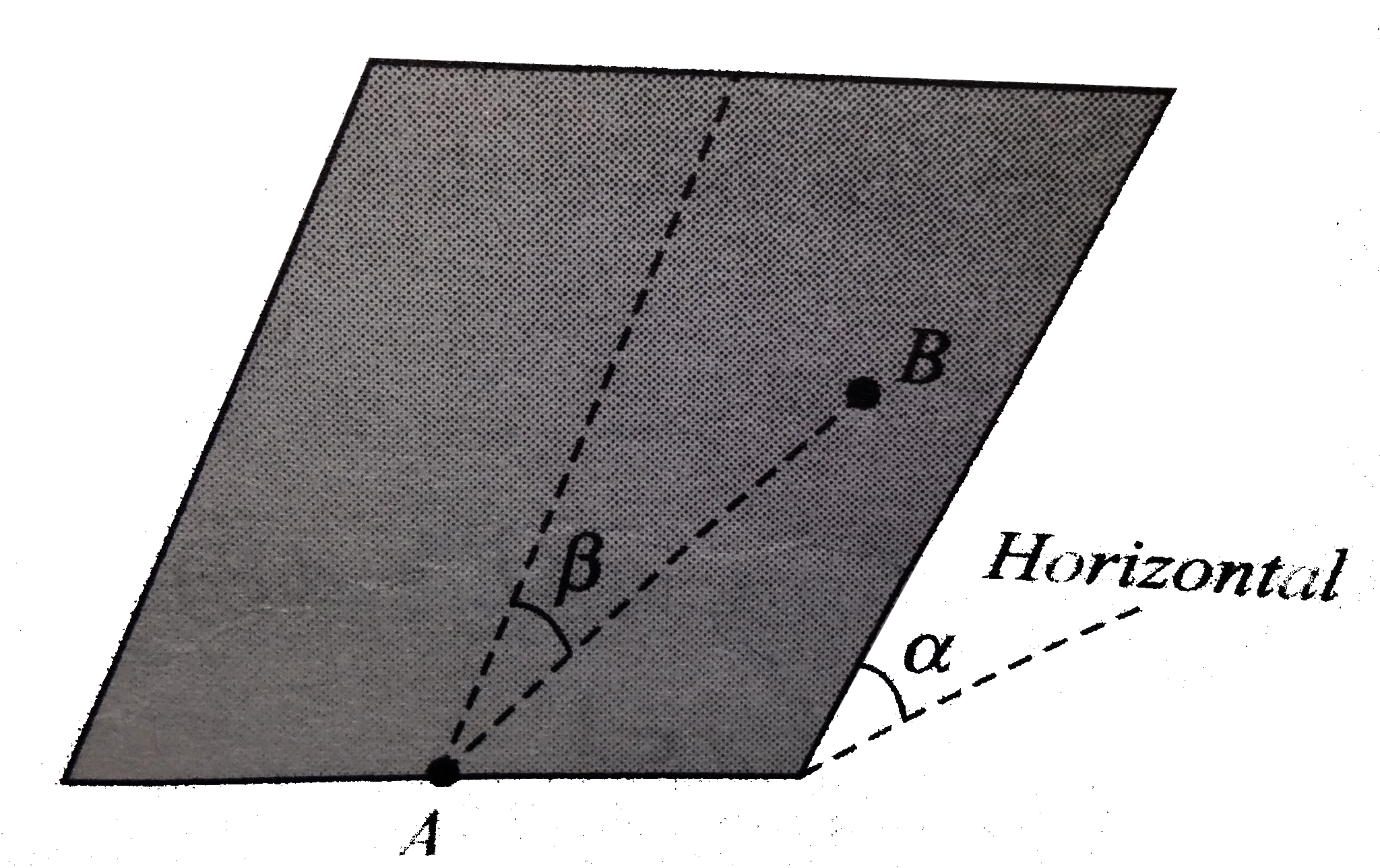A charge particle A is fixed at the base of a uniform slope of inclination α. Another charge particle B is placed on the slope at an angular position β measured from the line of greatest slope passing through the position of the first particle. The coefficient of froction between the particle B and the slope is μ(μ<tanα) .For the particle at B to stay in equilibrium what would be the maximum value of the angle β ?

The electrostatic repulsive froce will act along the line joining the two charges along AB. The driving force on particle B are Fe and mg sin α. The friction will act in the direction opposite to the resultant of these forces. Let friction act at an along θ to the line AB.
Let us analyze the force parallel and perpendicular to AB. the forces action on B perpendicular to AB are the cpmponents of friction force fsinθ and (mgsinα)sinβ.

If the particle is in equilibrium
fsinθ=(mgsinα)sinβ
or f=mgsinαsinβsinθ or f≤μmgcosα
or, mgsinαsinβsinθ≤μmgcosα
or sinβ≤μcotα×sinθ
β is maximum when sinθ=1. So
β≤sin−1(μcotα).
Topper's Solved these Questions
- COULOMB LAW AND ELECTRIC FIELDBOOK - CENGAGE PHYSICS ENGLISHCHAPTER - COULOMB LAW AND ELECTRIC FIELDEXERCISE - Exercises
58 Videos
- COULOMB LAW AND ELECTRIC FIELDBOOK - CENGAGE PHYSICS ENGLISHCHAPTER - COULOMB LAW AND ELECTRIC FIELDEXERCISE - Subjective Type
15 Videos
- COULOMB LAW AND ELECTRIC FIELDBOOK - CENGAGE PHYSICS ENGLISHCHAPTER - COULOMB LAW AND ELECTRIC FIELDEXERCISE - Single Answer Correct Type
22 Videos
- CENGAGE PHYSICS DPPBOOK - CENGAGE PHYSICS ENGLISHCHAPTER - CENGAGE PHYSICS DPPEXERCISE - subjective type
51 Videos
- ELECTRIC CURRENT & CIRCUITSBOOK - CENGAGE PHYSICS ENGLISHCHAPTER - ELECTRIC CURRENT & CIRCUITSEXERCISE - Kirchhoff s law and simple circuits
15 Videos
Similar Questions
Charge on α−particle is
View SolutionWhen α- particles are passed through a thin foil, then
View SolutionA particle is projected along the line of greatest slope up a rough plane inclined at an angle of 45∘ with the horizontal. If the coefficient of friction is 1/2 . Their retardation is:
View SolutionA particle is projected along the line of greatest slope up a rough plane inclined at an angle of 45∘ with the horizontal. If the coefficient of friction is 1/2 . Their retardation is:
View SolutionA heavy particle is projected with a velocity at an angle with the horizontal into the uniform gravitational field. The slope of the trajectory of the particle varies as
View SolutionThe charge on α particle is ………The charge on proton
View SolutionPositively charged particles are projected into a magnetic field. If the direction of the magnetic field is along the direction of motion of the charged particles, the particles get
View SolutionFind the slope of the line passing through the points A (-2, 3) and B (2,7). Also find the inclination of the line AB.
View SolutionA charge particle q1, is at position (2, -1, 3). The electrostatic force on another charged particle q2 at (0, 0, 0) is :
View SolutionAlpha particles are positively charged.
View Solution
